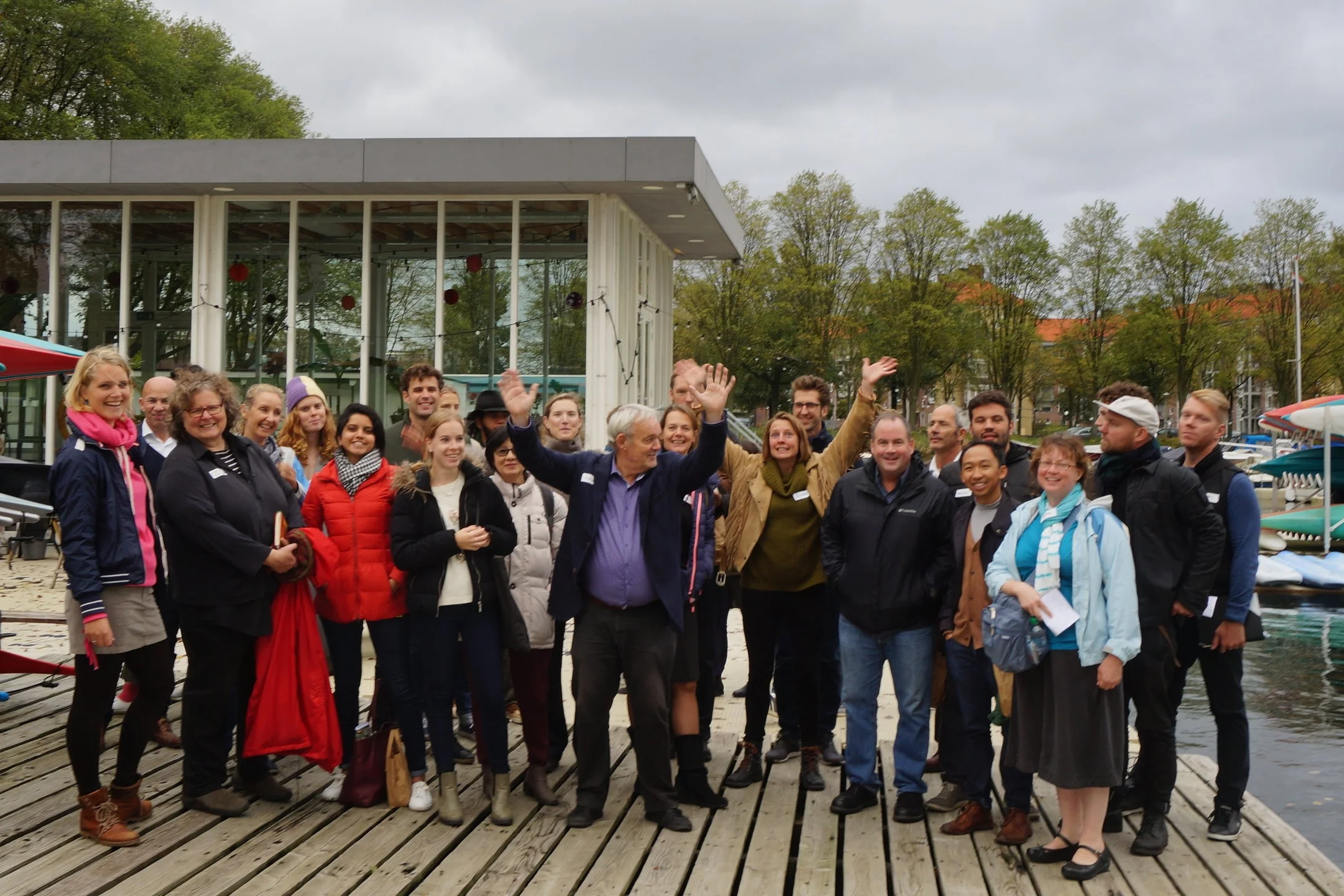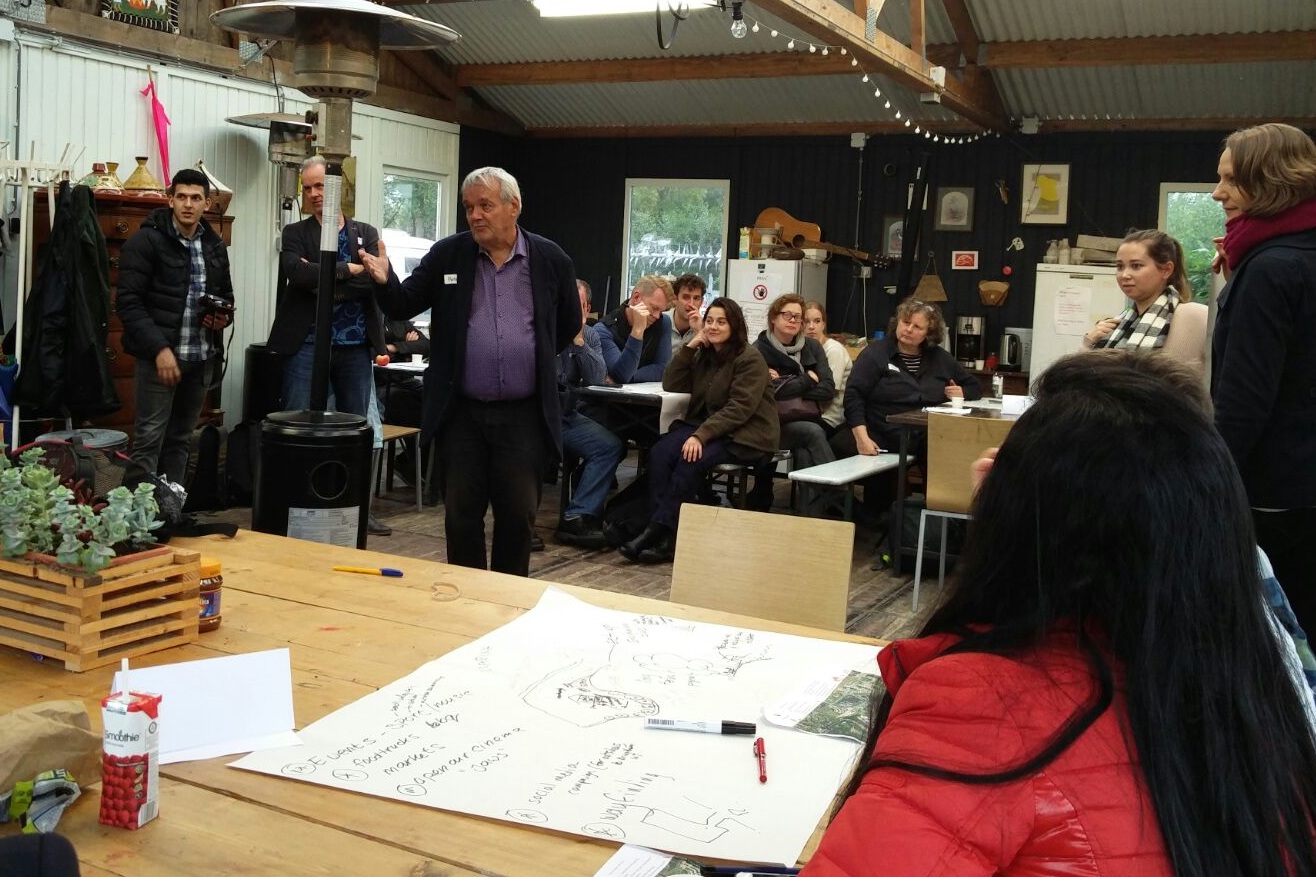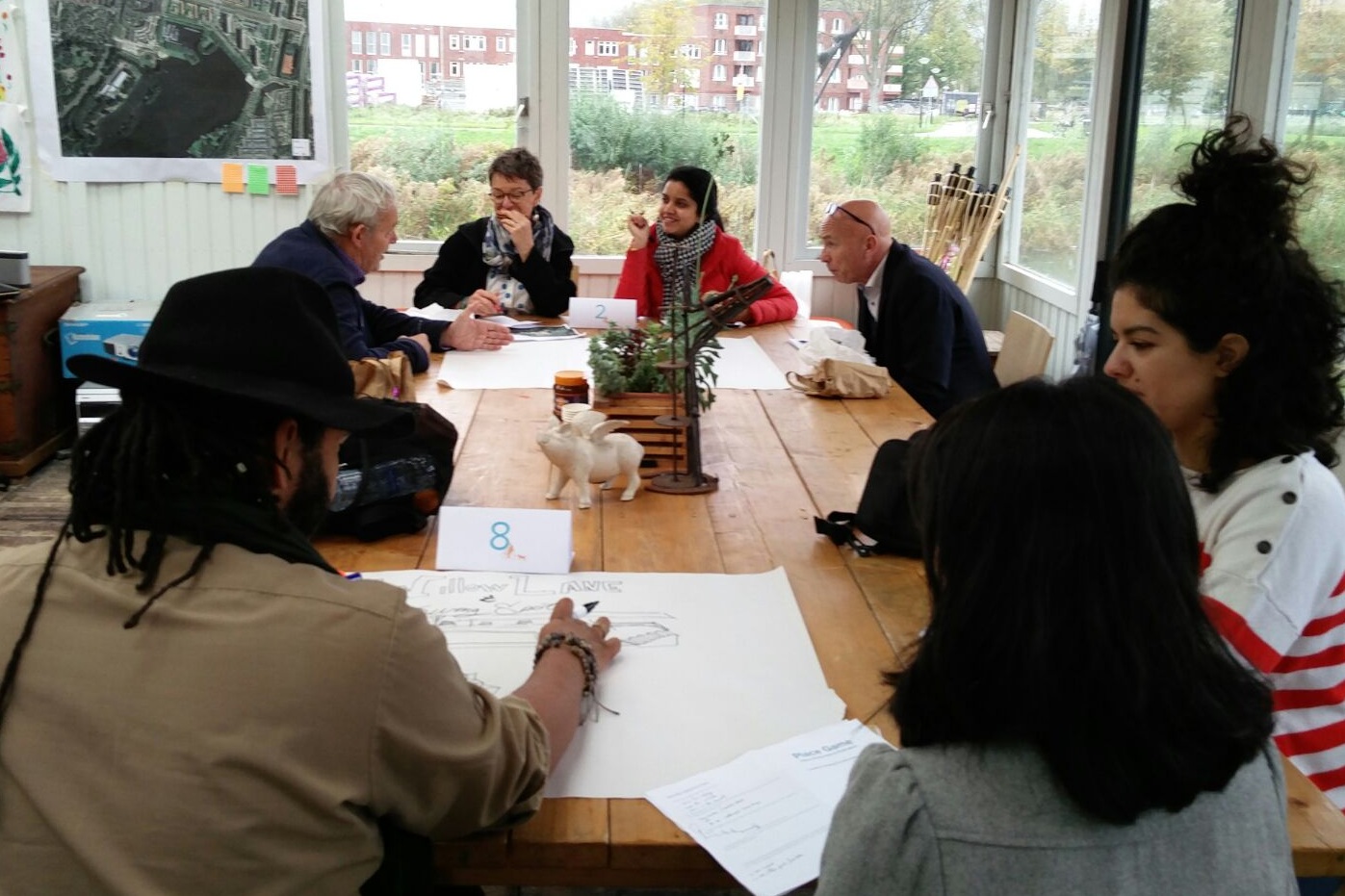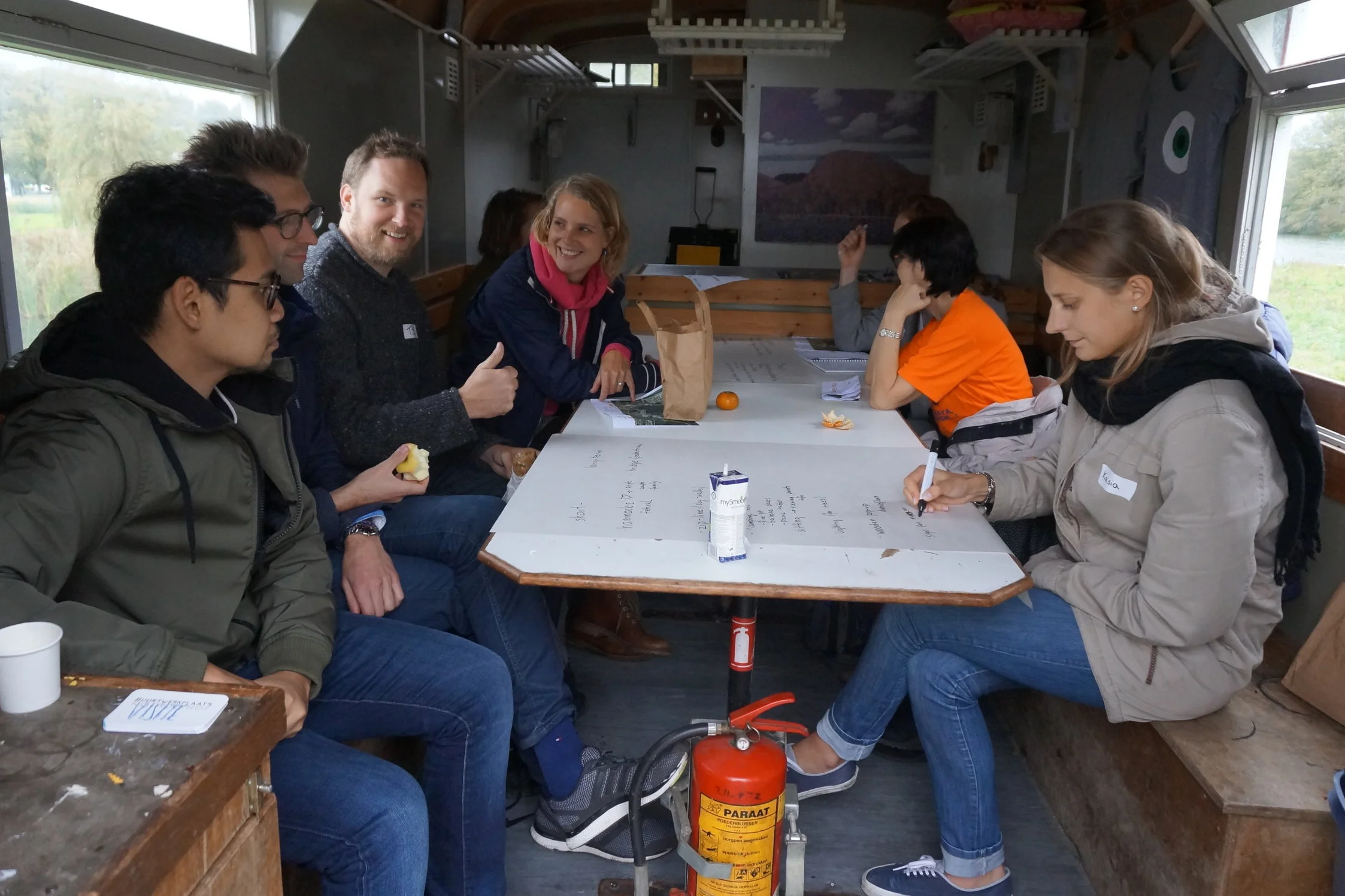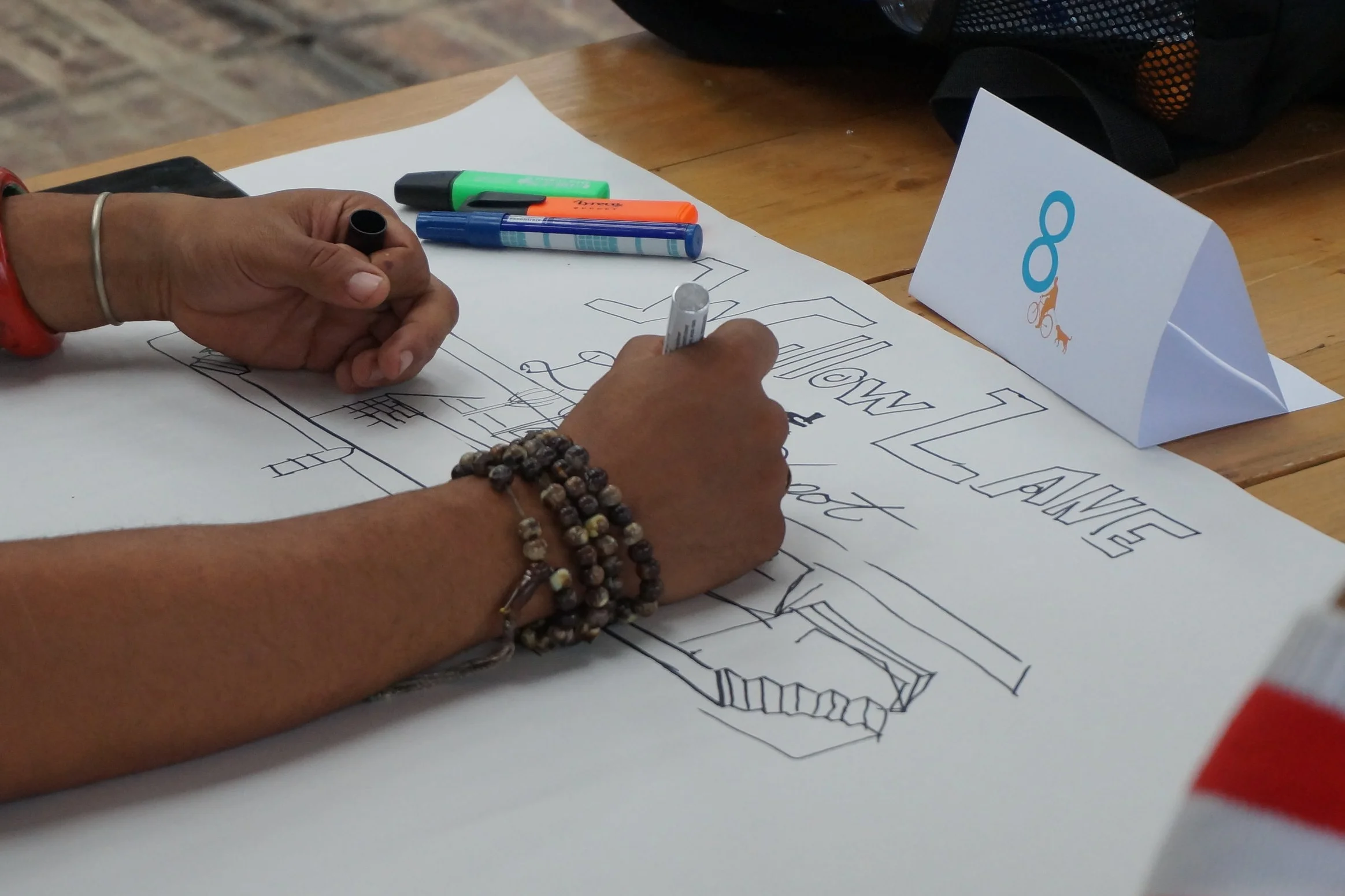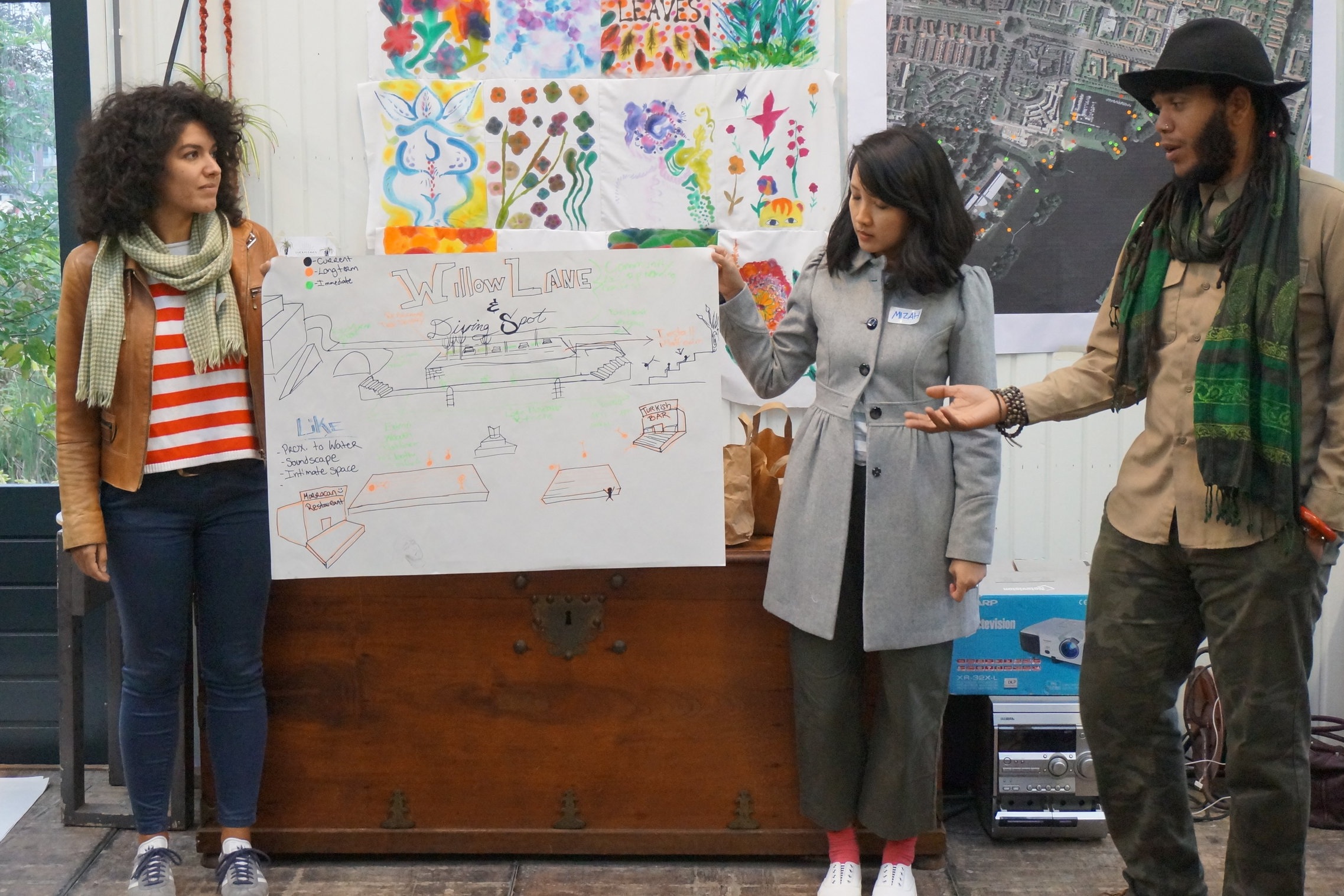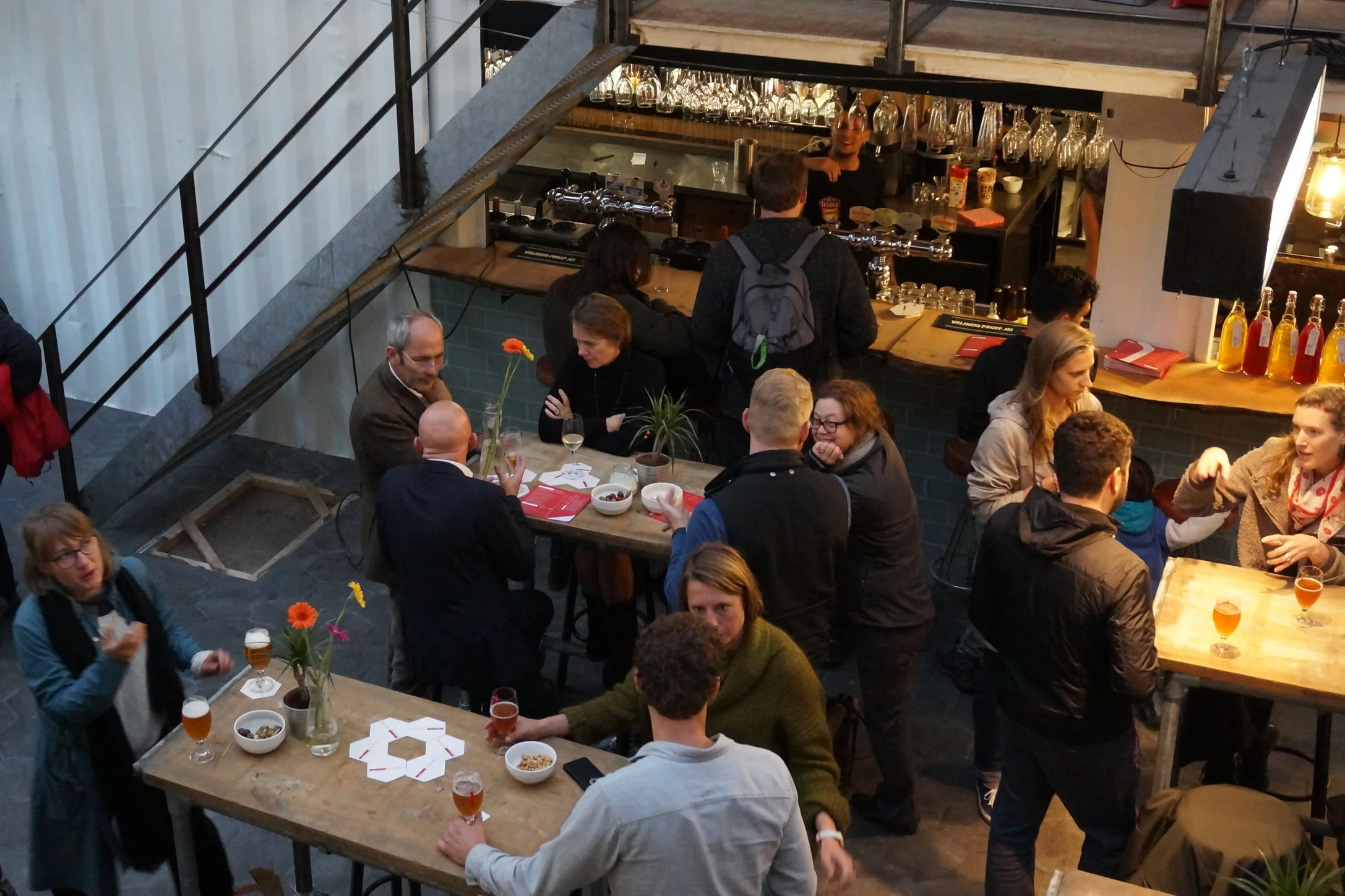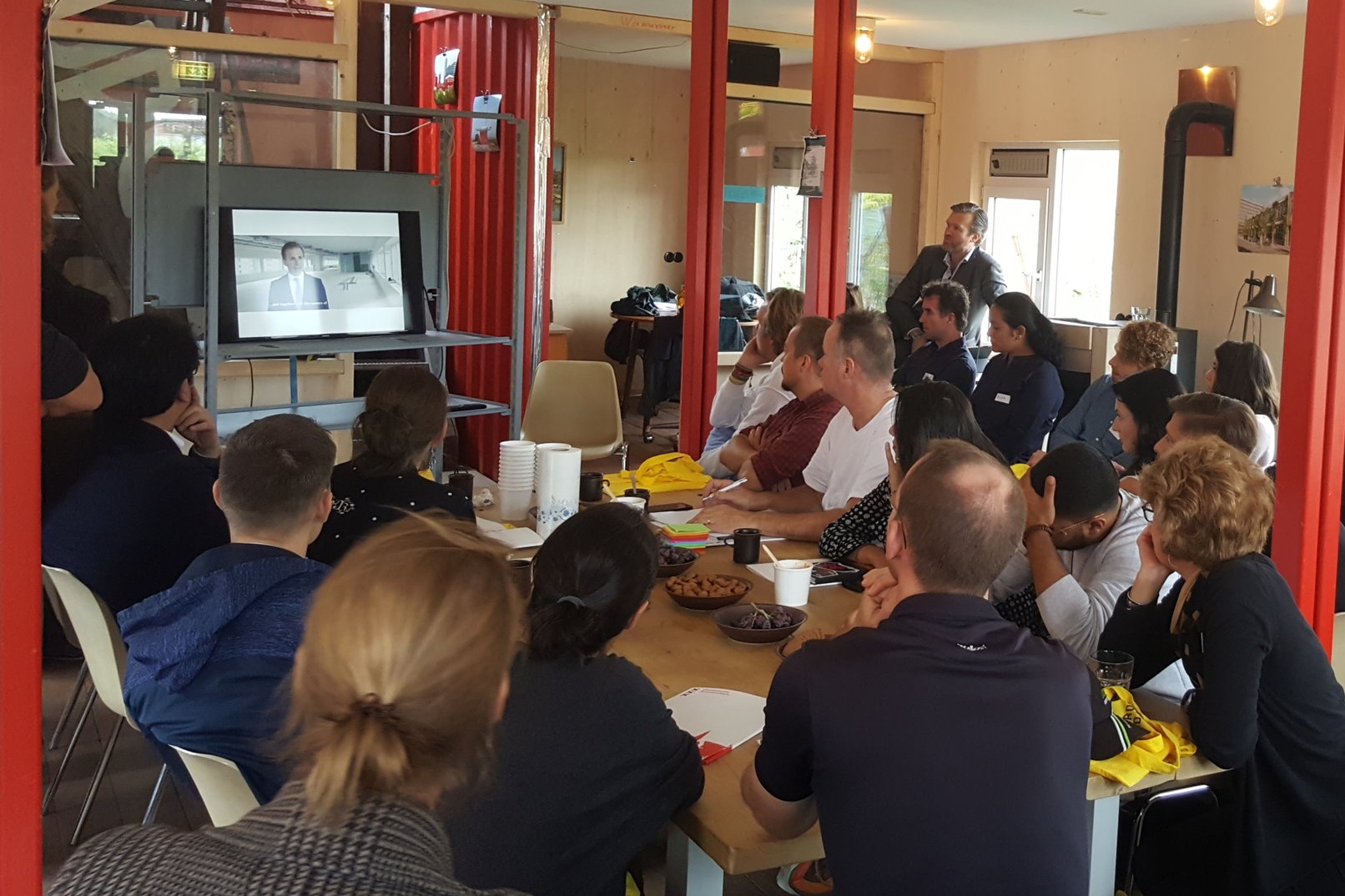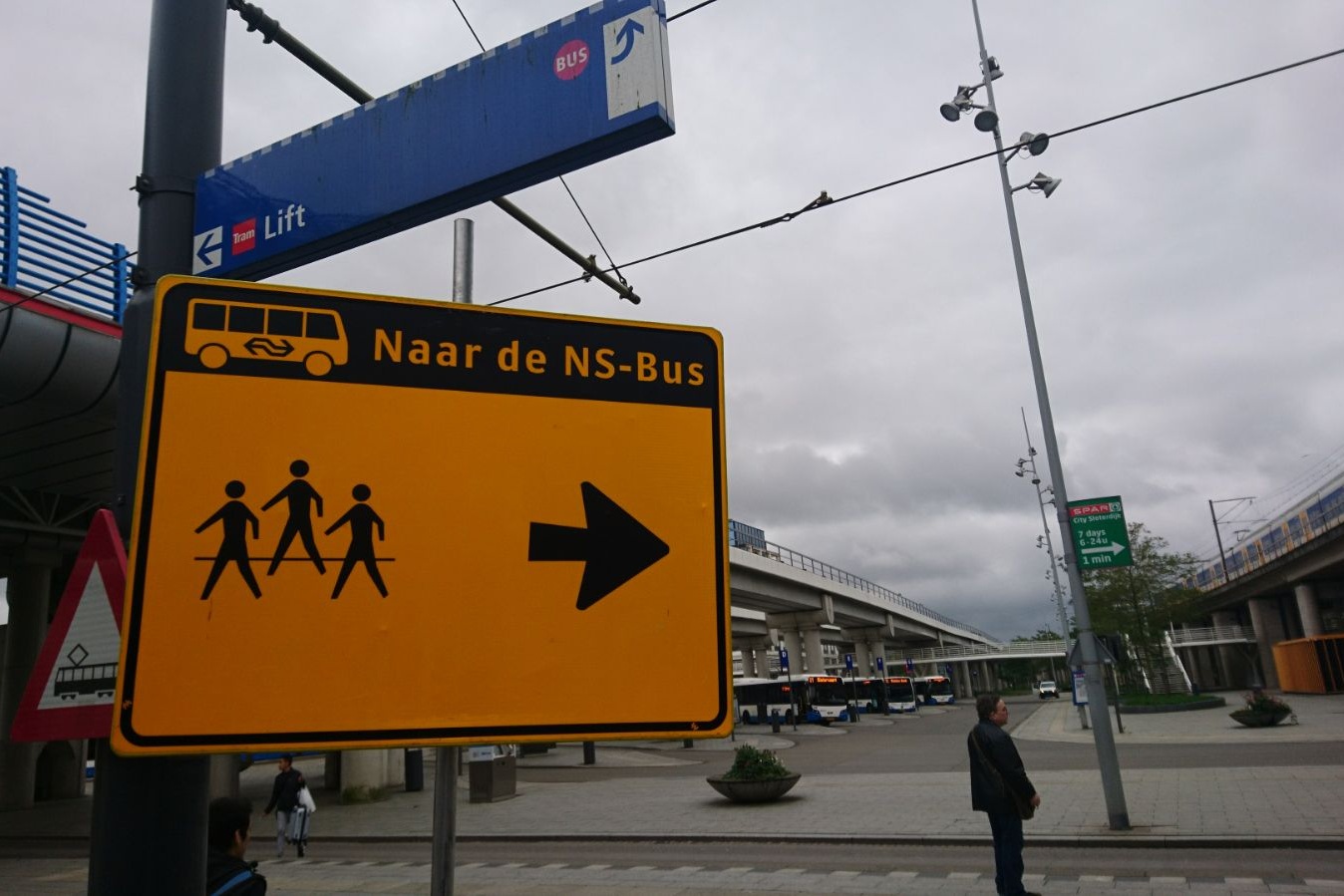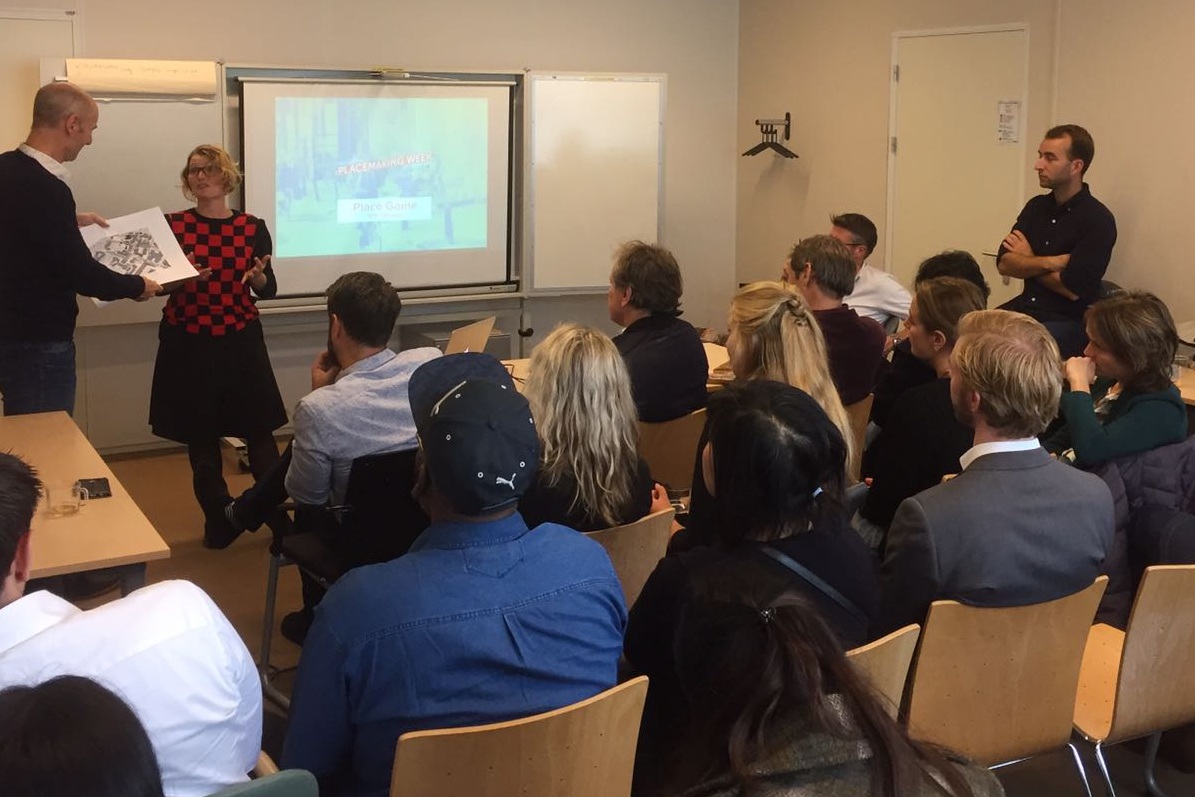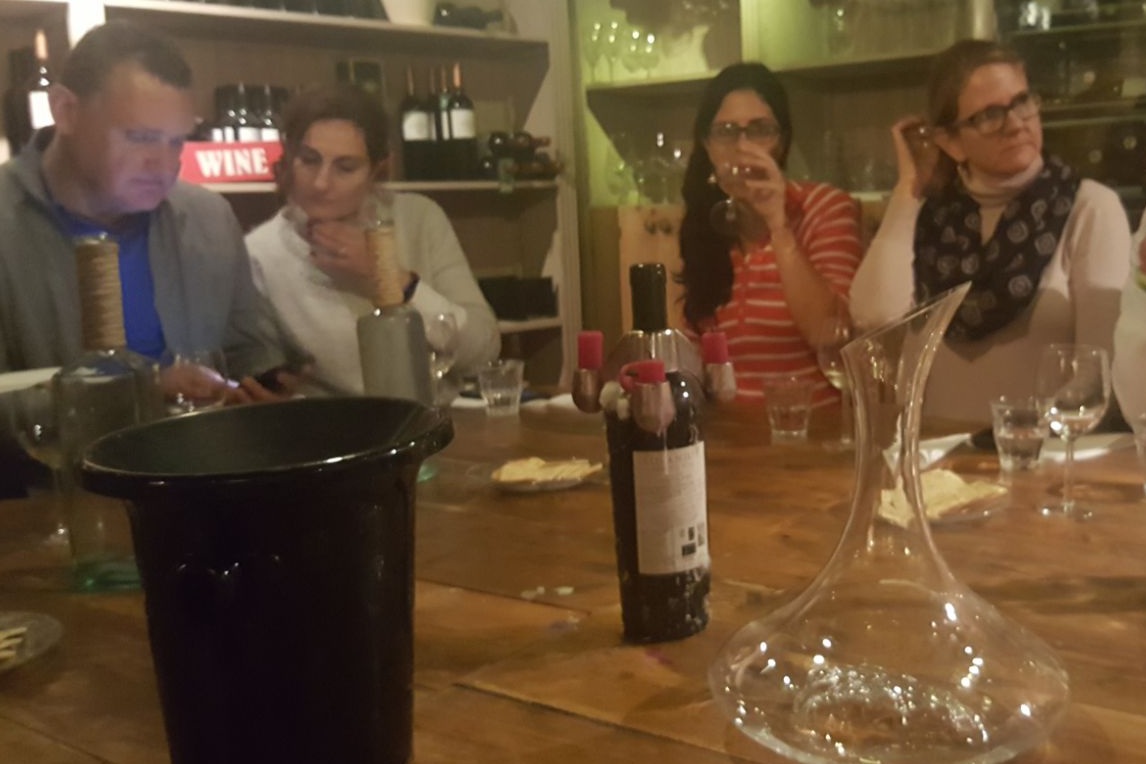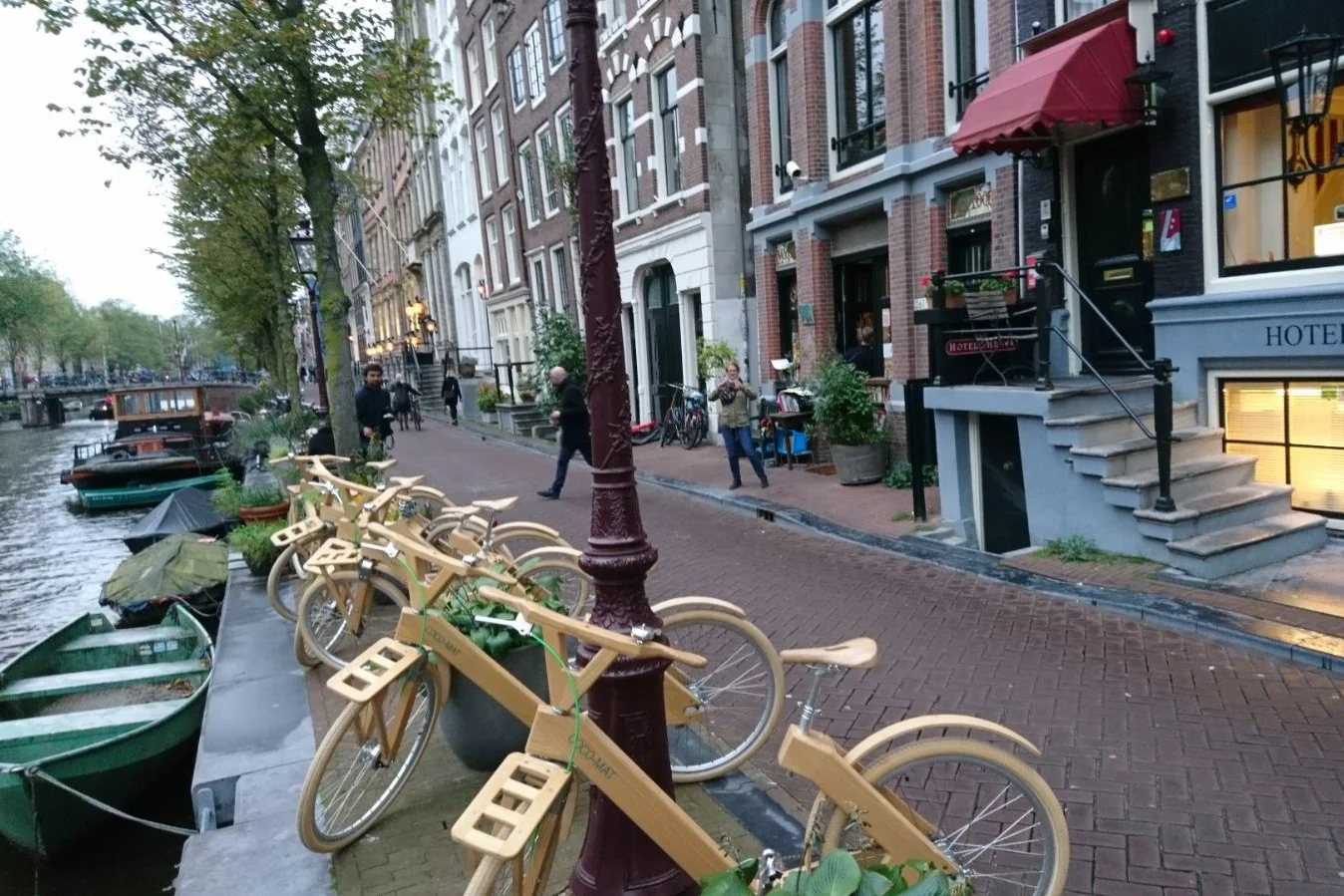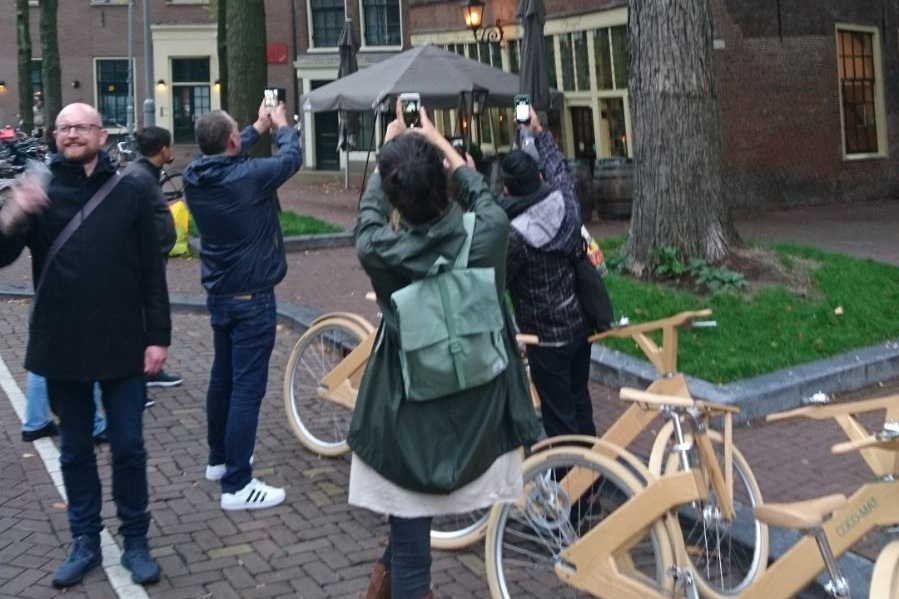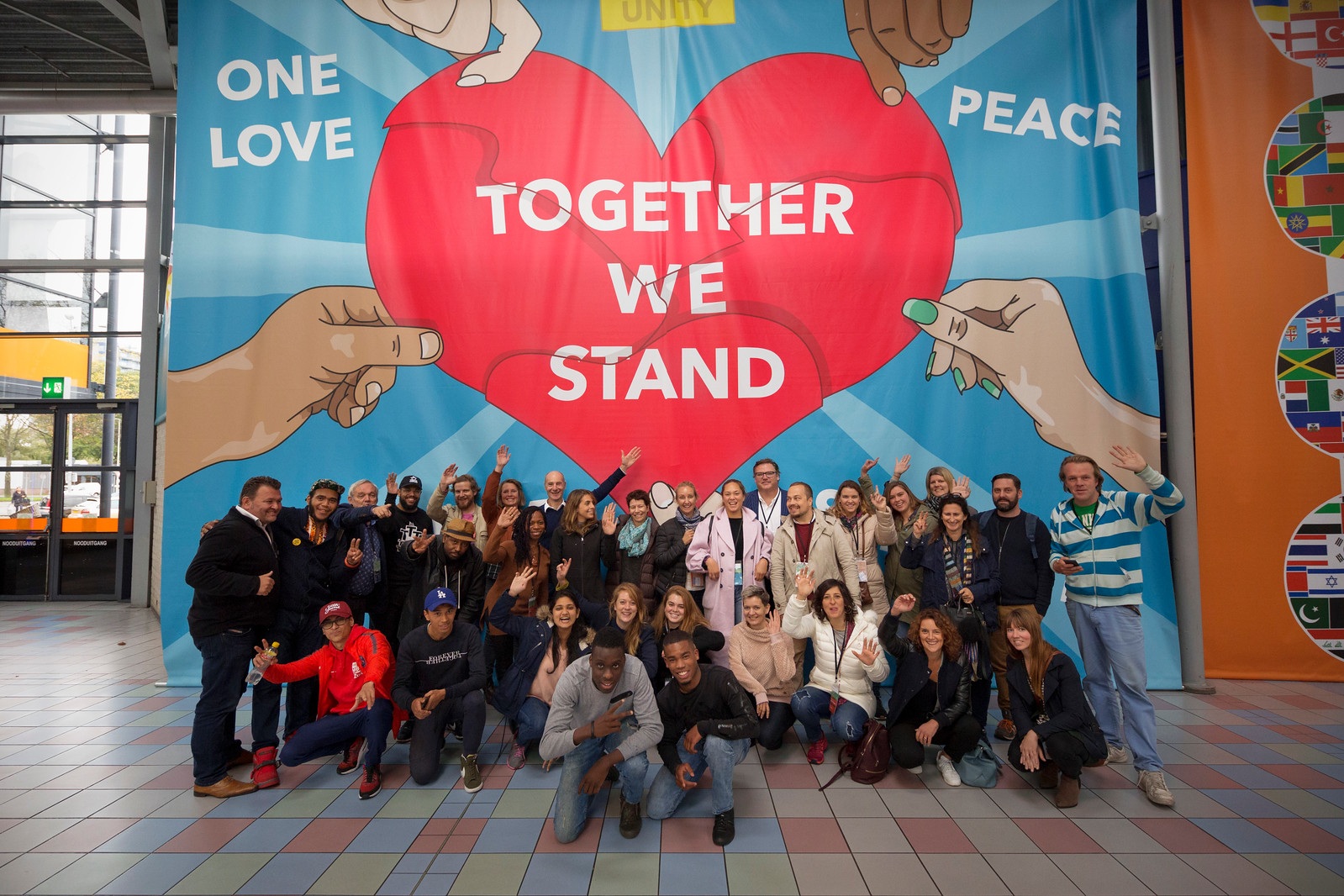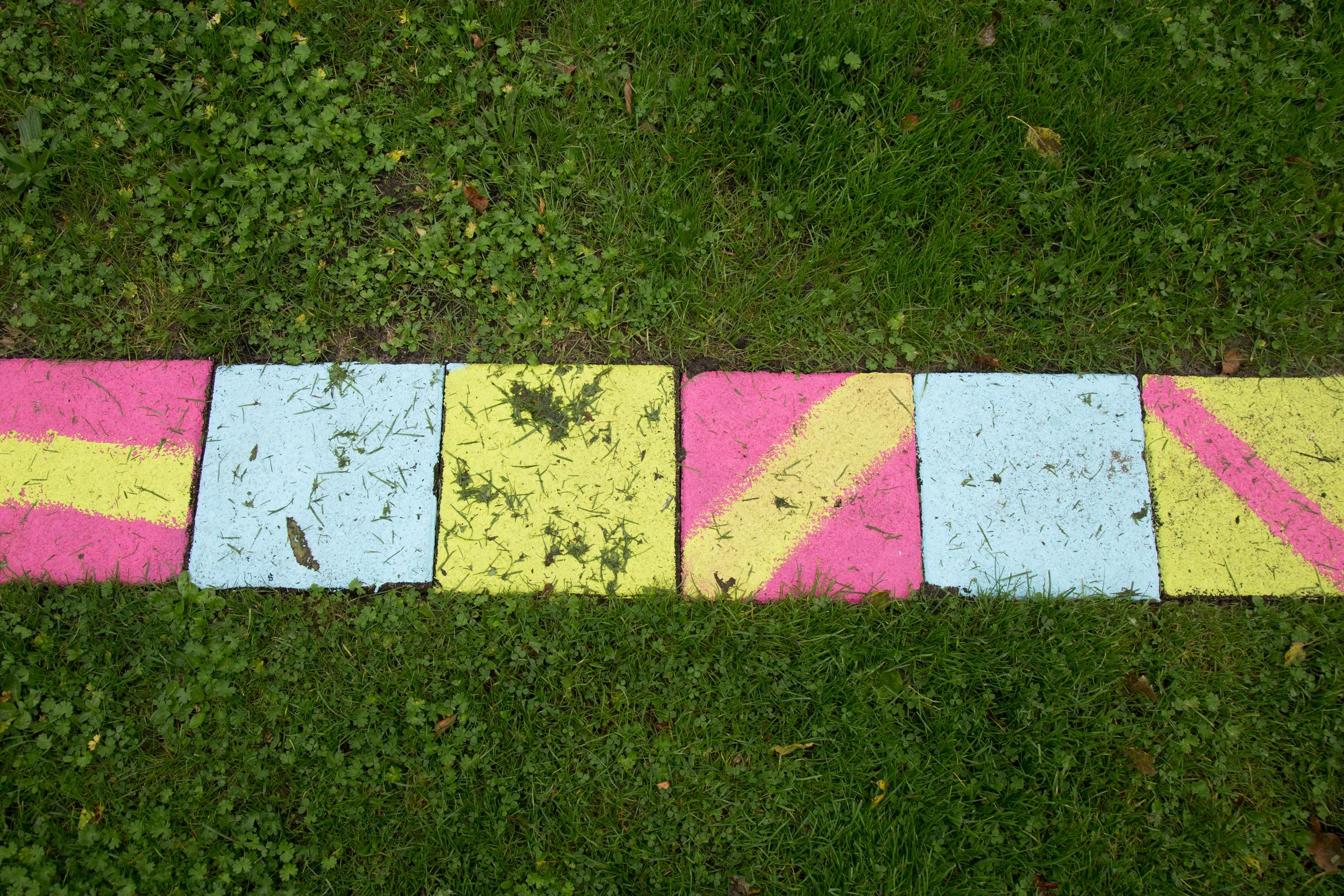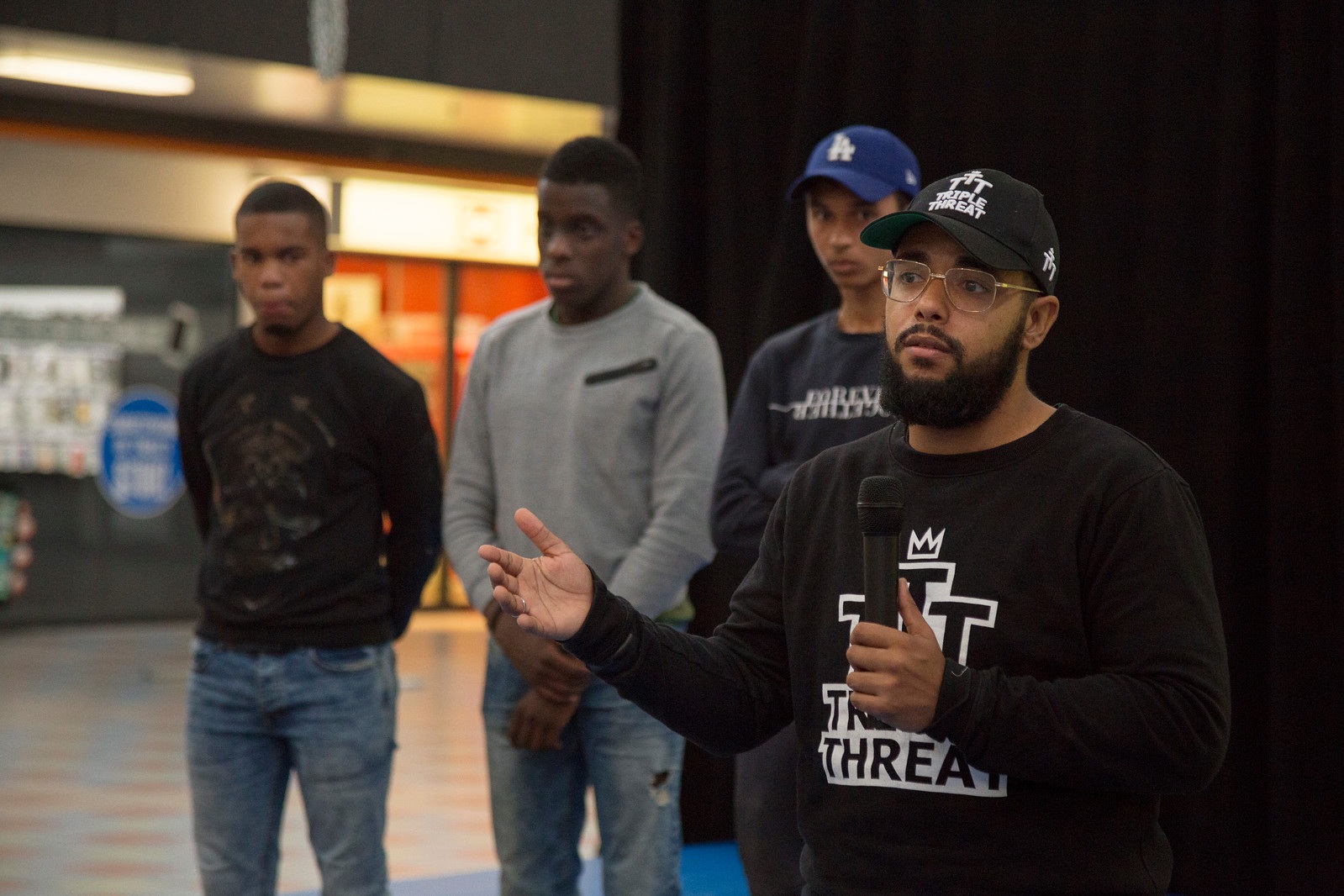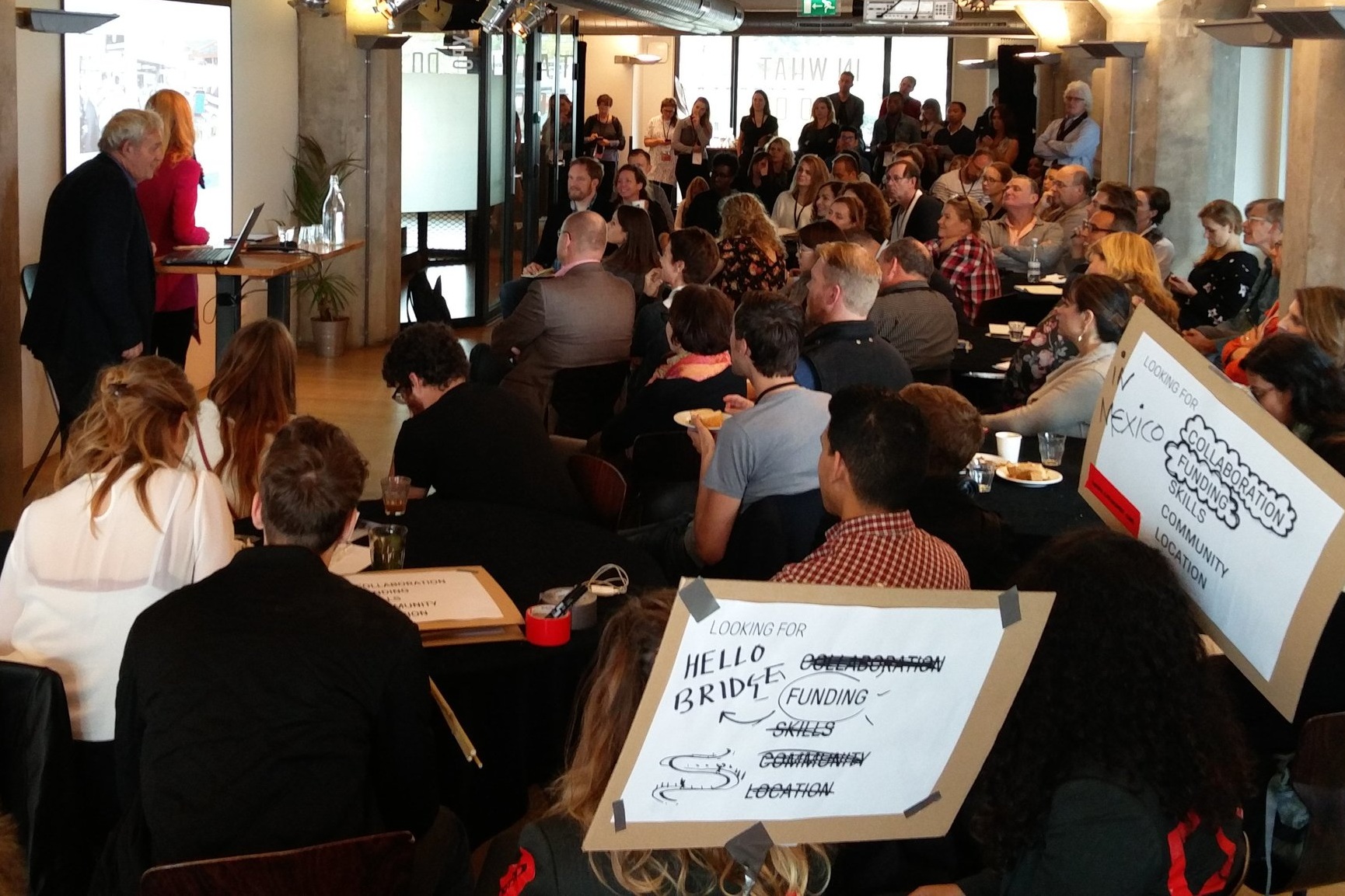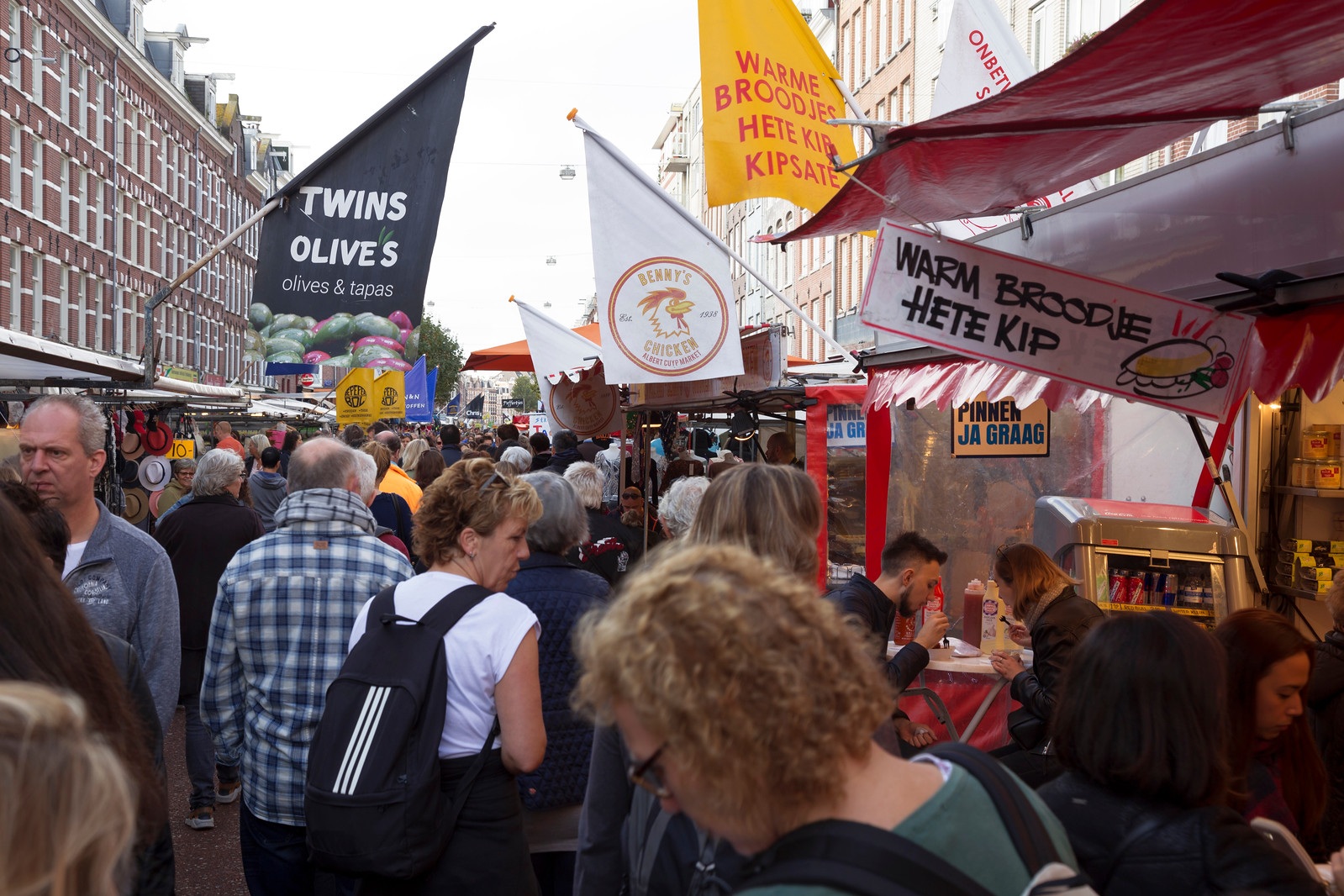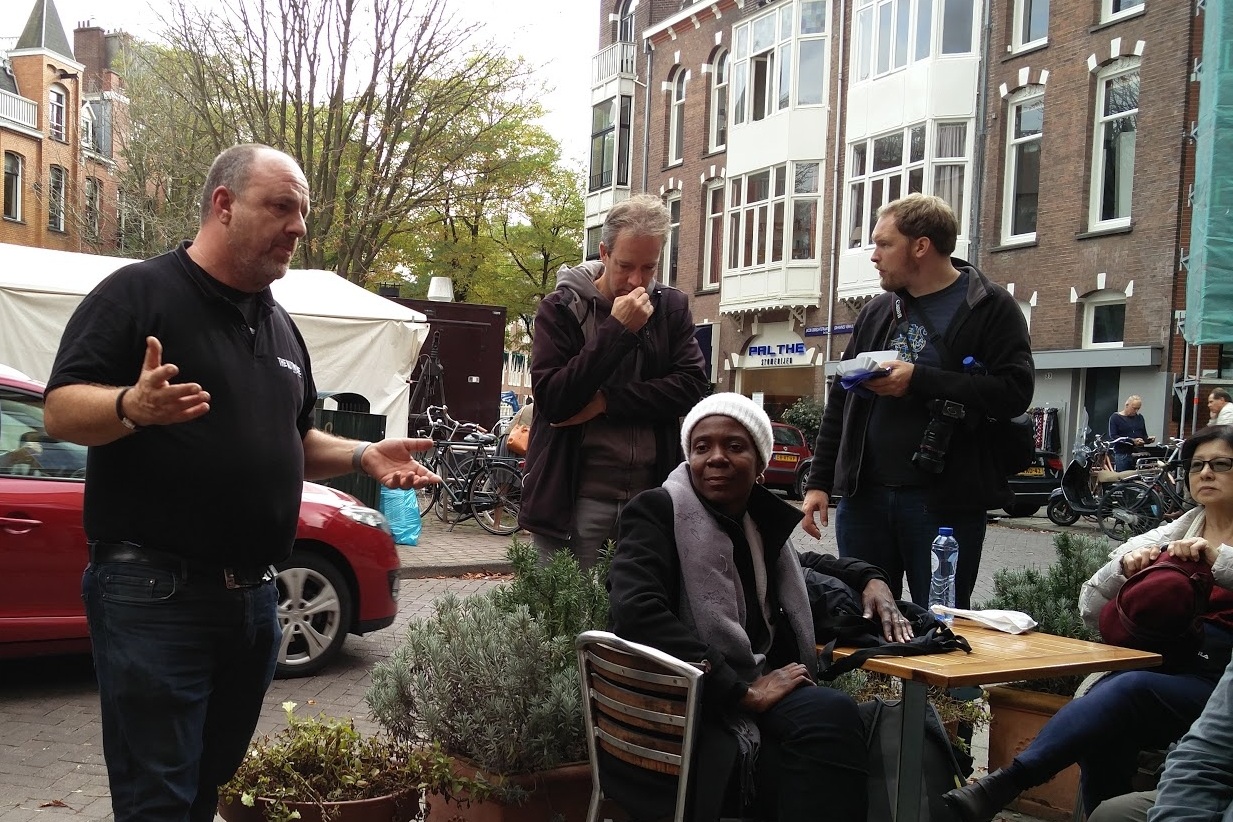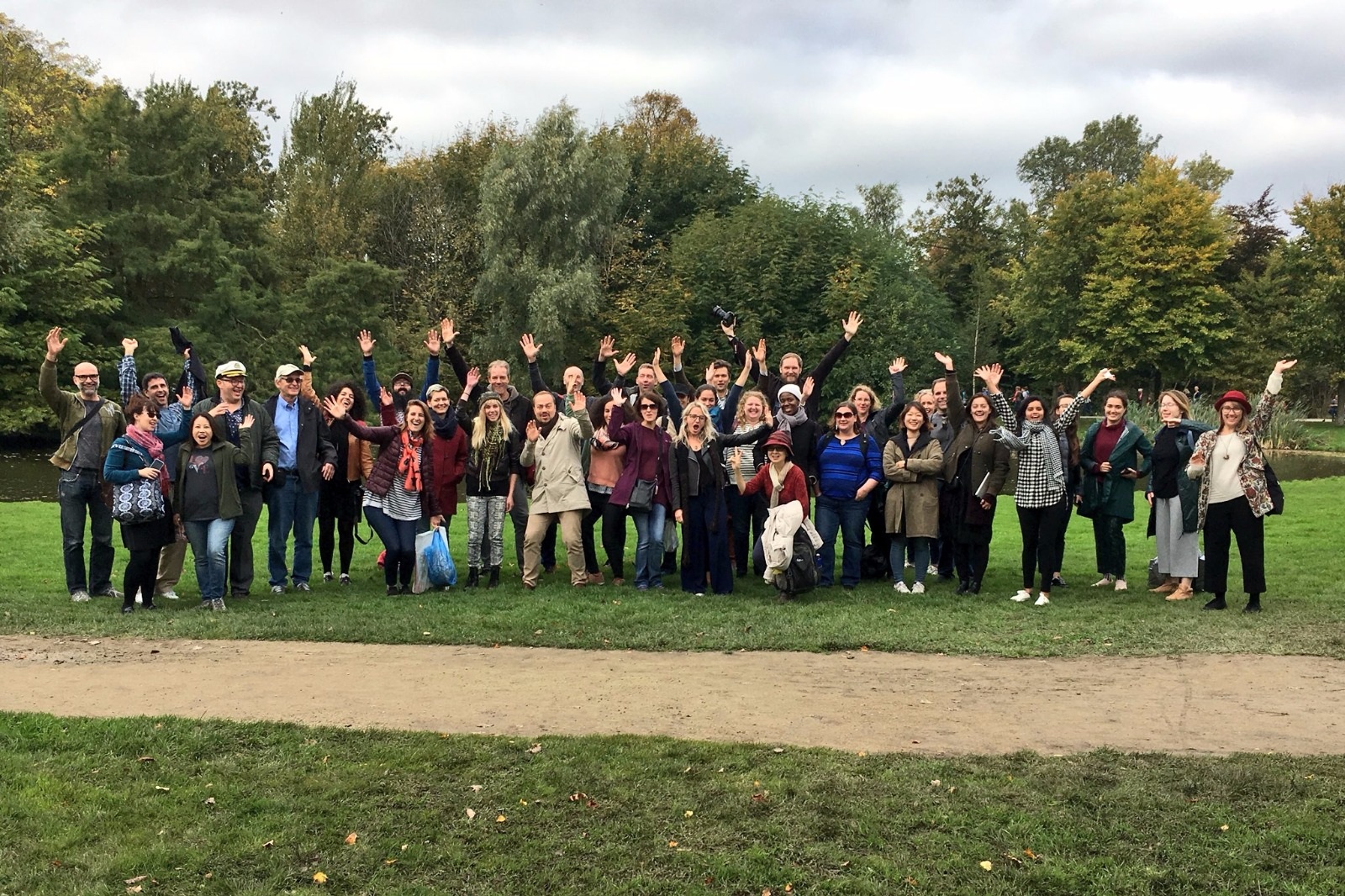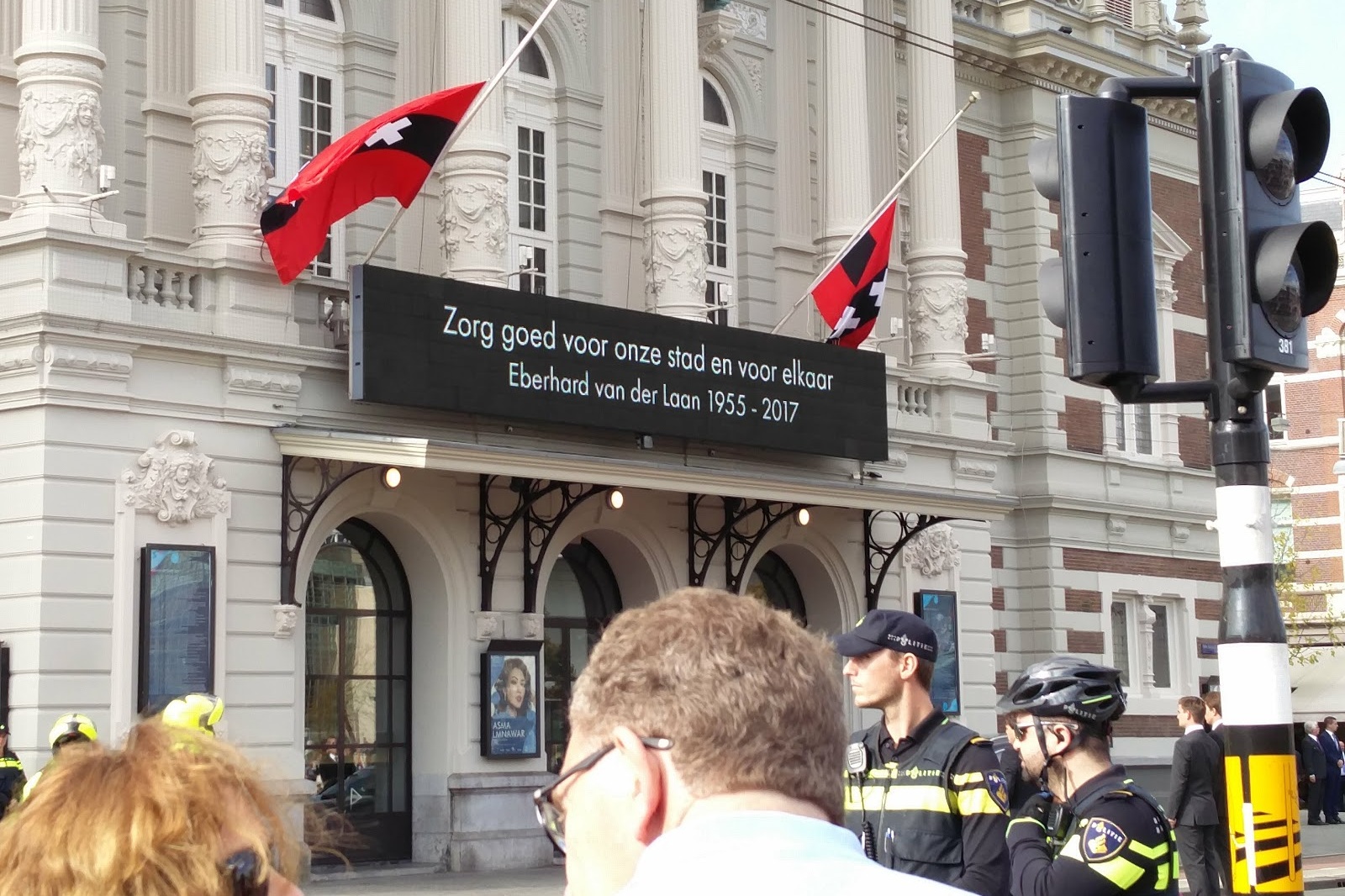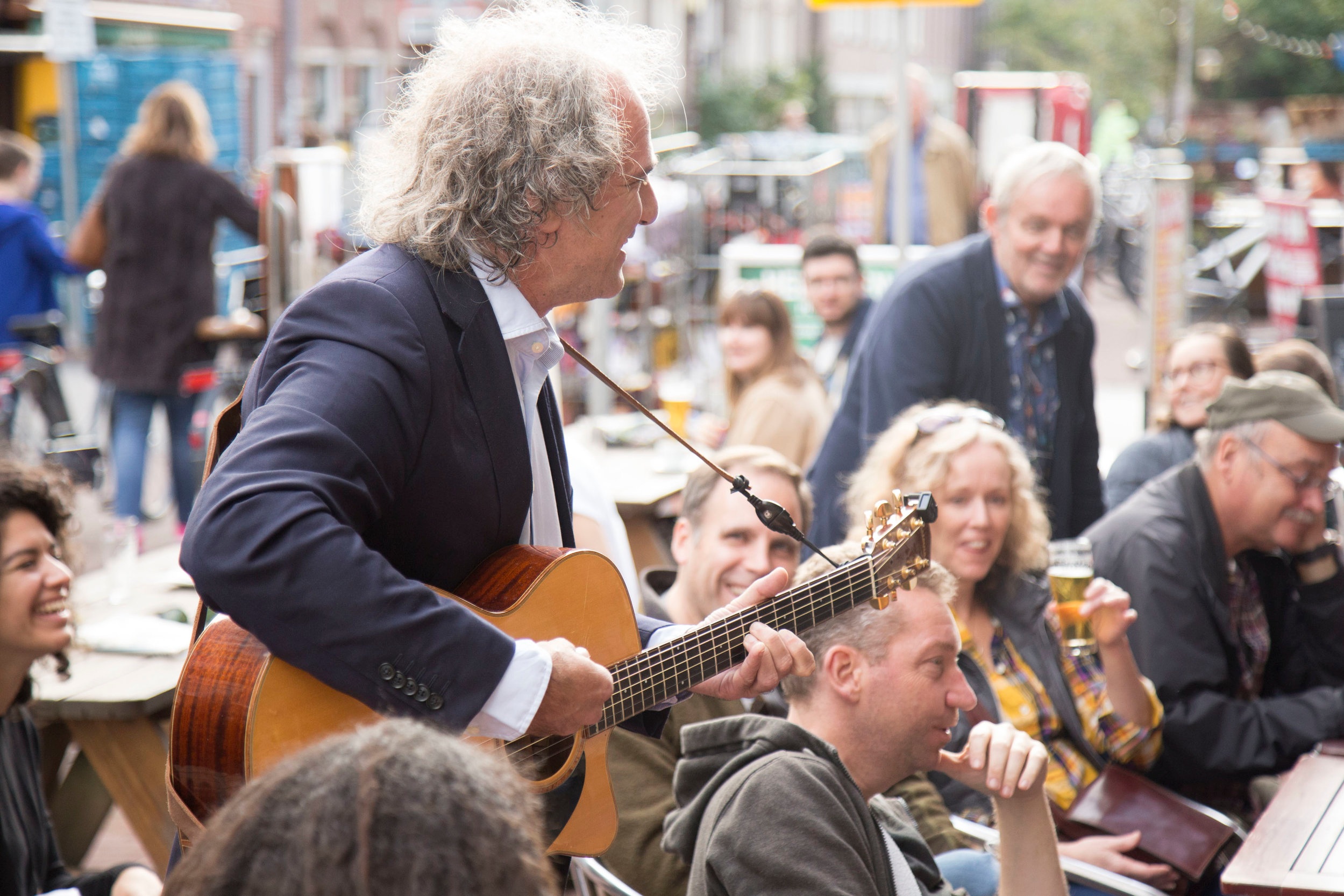Placemaking Week 2017
Amsterdam, 10th-14th October 2017
Building upon the momentum of the Placemaking Leadership Council and 2016’s Placemaking Week in Vancouver, Project for Public Spaces collaborated with their Dutch partners — STIPO, Placemaking Plus and Pakhuis de Zwijger—to create a dynamic forum for attendees to develop and share concrete strategies to advance placemaking locally and globally – the Placemaking Week 2017.
Public space is located at the intersection of many global issues - from health to sustainability, innovation to equity. Placemaking Week is all about leveraging this convergence.
The Placemaking Week was closely looking into the case of Amsterdam, trying to reach out to existing processes here and bring its expertise. Therefore, 6 Place Games were organised based on ‘Koers 2025’ – the strategic plan for building 12.000 housing up to 2025. Urban development is not only building houses, but also about creating pleasant public spaces for the new residents and the existing users of the new neighbourhoods. That’s why the Place Games were held in these area’s in preparation to all these new developments.
As co-producer of the Placemaking Week Placemaking Plus was host and organiser of different events and sessions.
Tuesday October 10th:
- Place Games: Reigersbos, Sloterdijk and Sloterplas
- Guided Tour: A Piece of Amsterdam where international placemakers meet the locals
Wednesday October 11th:
- Expedition: The Haarlem Safari
Friday October 13th:
- Paneldiscussion: Strange Bedfellows – Placemakers and Developers
Saturday October14th
- Guided Tour: Market Safari by boat & foot
Place Game Sloterplas
10th October 2017
Host: Buurtwerkplaats Noorderhof
Participants: 35 varying from local entrepreneurs and inhabitants, international placemakers to government officials.
The Sloterplas is a lake in the middle of the western garden area of Amsterdam, part of the post-war modernist extension plan from the 50s. The water is beautiful, but also underused. The city sees the Sloterplas as one of the potential locations for the city's growth, densifying the area, and creating higher quality public space, according to Koers 2025 plan. In the mean time, several placemaking initiatives have popped up to get things started.
The area around the Sloterplas has lost part of its vividness because it has an unclear function and is not fully used. The participants discussed different ideas that can transform this area from a livable to a loveable area. To find new possibilities around the Sloterplas, ten groups of people were visiting chosen places. These varied from public parks, streets, squares to monuments and buildings.
The most important question to ask is 'where can we start tomorrow', and that's where we paid the most attention for during the place game. Accoring to participants of the place game, almost entire area is very poorly signed – wayfinding here is very complicated and even though there are a few local treasures, it is hard to notice them. Also, a very quick win, that would add value rapidly, is removal of the fence from the pool - it is blocking the waterfront and it is the only place in the entire Sloterplas area, where you can not walk next to waterfront. One of the most spectacular features of the are is openness. This creates perfect conditions for local events. It can vary in scale from very local events to big scale events such as music festivals. Moreover, green open spaces can be used as a community gardens and itwould help people to would regain ownership.
Read the full report of place game Sloterplas below or download it.
Place Game Report
Place Game Sloterdijk
10th October 2017
Location: Sloterdijk - Carascoplein
Host: Studio Valkenier.nl and Tuin van BRET
Participants: 35 varying from local entrepreneurs, international placemakers to government officials.
Sloterdijk is one of Amsterdam's major public transit nodes in the western part of Amsterdam and one of the few areas that according to ‘Koers 2025’ should receive more attention – redevelopment, densification, housing and new developments should come.
During the place game, participants zoomed in on a complicated area: the Carascoplein, which is divided by railtracks and flyovers for cyclist and pedestrians. How can we make an attractive public space here? What is needed to make the place more useful? How can nearby stakeholders contribute? Participants were challenged to come up with creative, unexpected, and inspiring ideas for the Carascoplein.
All the ideas and solutions—presented by the paricipants of the Place Game—were discussed by a panel of local experts. Where can we start tomorrow? Almost all groups came up with two important short term ideas – adding more color to the area and improve the signing in the area. Adding food to the area was also often called as one of the things to seduce people to stay longer in the area and always a good recipe for placemaking. Finally a lot of groups came up with short term ideas for more safety and comfort – like more lightning, events, music and sports.
Read the full report for Place Game Sloterdijk below or download it.
Place Game Report
Place Game, Reigersbos
10th October 2017
Host: Cordaan Reigersbos
Participants: 25 varying from local entrepreneurs and inhabitants, international placemakers to government officials
Wednesday is a market day in Reigersbos in the south-east area of Amsterdam, which is a veritable feast for the senses. Most of the locals still call it the “Bijlmer,” and this market is truly “Bijlmer’s Best!” Here, the enormous diversity of Amsterdam really shows.
The market takes places at a shopping mall at the center of the Reigersbos neighborhood. The mall has plenty of amenities too: two primary schools, one secondary school, a public library, a health centre, and so on. But the entrances to the mall, the surrounding parking areas and a few empty buildings call out for new solutions.
The day of the Place Game there were more than 25 participants from around the world as well as local businessman, creative people and inhabitants. This colorful mix of expertise and different points of view brought a lot of unexpected and valuable insights about Reigersbos neighbourhood.
Where can we start tomorrow?
According to the place game participants cleaning up is needed in most of the area, especially backyards of the shops. It adds a huge value for overall image of the area. Addition of the color and greenery would fastly boost the image. It could be added with professional graffiti or simply by coloring empty walls. Addition of greenery would easily change the mood of public space and make it more attractive. Also, improvements of signage and way finding would increase amount of traffic, usage of existing facilities and improve safety. Activities and things to do are missing: from kids playgrounds or just swings, to simple sitting places, or even community events - the more reasons to come to the area, the more people feel engaged with it.
Place Game Report
Read the full report for Place Game Reigersbos below or download it.
Guided tour: A piece of Amsterdam
10th October 2016
Host: wOOdy Amsterdam, The Wine Cellar and Pizzaria La Zoccola.
Participants: 20 international placemakers
At Tuesday October 10th Placemaking Plus organized a special side event for the participants of the Placemaking Week. For a lot of the international placemakers it was the first time they visited Amsterdam. We wanted to show them a piece of Amsterdam.
We started with a guided tour on wooden bikes through the city center of Amsterdam. The first stop was wine tasting at The Wine Cellar of José Belgerette – a Dutch Argentinian winemaker.
During this sucessful 'meet the locals' tour more people joined at various stops. Some of them did it after finishing other Placemaking Week activities (such as place games), others just arrived to Amsterdam.
In the end the group was bigger than expected and there were not enough places available in our selected restaurant. We noticed that the terrace of the neighbour was unused, so as placemakers of Placemaking Plus we saw an opportunity and a deal was made: we ordered pizza’s at the italian restaurant 'Pizzaria La Zoccola' and drinks at the neighbour’s cafe.
Although the Placemaking Week would be officially starting the next day, we already had our first succesful placemaking event.
Expedition: The Haarlem Safari
11th Oct 2016
Hosts: ‘De Koepel’ (former prison) and Centrum Schalkwijk Shopping area
Participants: 30 varying from local entrepreneurs and inhabitants, international placemakers to government officials
A daylong trip to Haarlem explores how a playful reuse of of the city's old jail, "The Cupola" (De Koepel) as a university and Centrum Schalkwijk shopping center into a center for entrepreneurship and community.
The city of Haarlem is commonly known as the home of the first printed book and the world's oldest newspaper still in print. Now, more than 500 years later, Haarlem is an important town in the metropolitan area of Amsterdam.
In both cases mentioned, private industry, developers and entrepreneurs joined forces with communities in the placemaking process. They co-financed the lighter, quicker, cheaper actions.
Prison
The Koepelgevangenis is a former prison. It is Panopticon-style buildings and a Rijksmonument. The prison closed in 2016 and then it was used to house asylum seekers to the Netherlands. Further plans for this prison are very promising - University College of Haarlem is planning to move there in upcoming years and it will become a new creative spot for studying, relaxed living, wandering through the courts or simple having a drink in the magical décor of the Dome. The prison will open its doors not only to students but also to people from Harlem and other visitors as a mulifunctional center full of art, cultur and contemporary entrepreneurship.
Shopping Center Schalkwijk
Two years after the first place game there are now some succesful placemaking steps are made, such as the now immensely popular DAK (roof) and OnderDAK (under the roof) in the shopping mall.
During the tour participants met all players in the placemaking tale of the New Haarlem. This project is an example of place-led development, however, the area is still seeking input, therefore we asked the international placemakers from Placemaking Week to join mini-Place Game.
The short term results of this game:
In this grayish Schalkwijk neighbourhood there is an urgent need for colors, lights and improvement of the image. Coloring empty facades, lighting up boring public spaces with colorful bulbs can be a quick win and bring more liveliness to the area
Moreover, it misses signage - improvement of wayfinding can help for new people in the area and can influence on their future visits here.
Another important part is activities, public spaces in Schalkwijk need activation - from simple playgrounds, sports courts, to year round programming, like ice-skating, Christmas markets.
Report from the Mini-Place Game you can see below or download it.
Mini-Place Game Report Schalkwijk
Panel discussion: Strange bedfellows
13th Oct 2016
What happens when communities, developers, entrepreneurs, and the city wake up together? How can stakeholders with different goals create value for all through placemaking?
This panel of leading developers showed us how placemaking allows them to meet a "double bottom line" in housing, supermarkets, airports, hospitals, shopping malls, storefronts and more.
In this crowded sessions we had various presentors. Annebel Poot, Director of Ahold Europe that is one of the leading retail companies in the Netherlands, presented us their business model and what position placemaking is taking in it.
In his presenation Tony Wijntuin from Wyne Strategy & Innovation showed us his experience with mixture of placemaking and retail and highlighted how can one benefit from another.
Laurens Sloot is Professor of Retail Marketing at the Department of Marketing of the University of Groningen. Furthermore, he has a special interest in emerging topics in the national and international food industry and economic developments in general and during the this session he provided us with more academical information of human behaviour in supermarkets, types of shoppers and how can placemaking projects influence shopping experience.
Guided tour: Market Safari by boat and foot
14th Oct 2017
Host: Peter Groenendaal
Participants: 55 varying from local entrepreneurs and inhabitants, international placemakers to government officials
Placemaking Plus director and market expert Peter Groenendaal took the participants on a dynamic daytrip to the city’s main markets by boat and foot. Started with the boat to the diverse, inclusive Dapper Market and the touristic Ablert Cuyp Market. From there a walk through the historic Museum Distric brought us at the ZuiderMRKT, inititiated by the neighbourhood. A typical food market fort the upper class of Amsterdam. The final stop of this inspiring day was the resilient Ten Kate market, the Food Hallen and drinks at Topido, the cafe where you could mtet the locals and market vendors.








